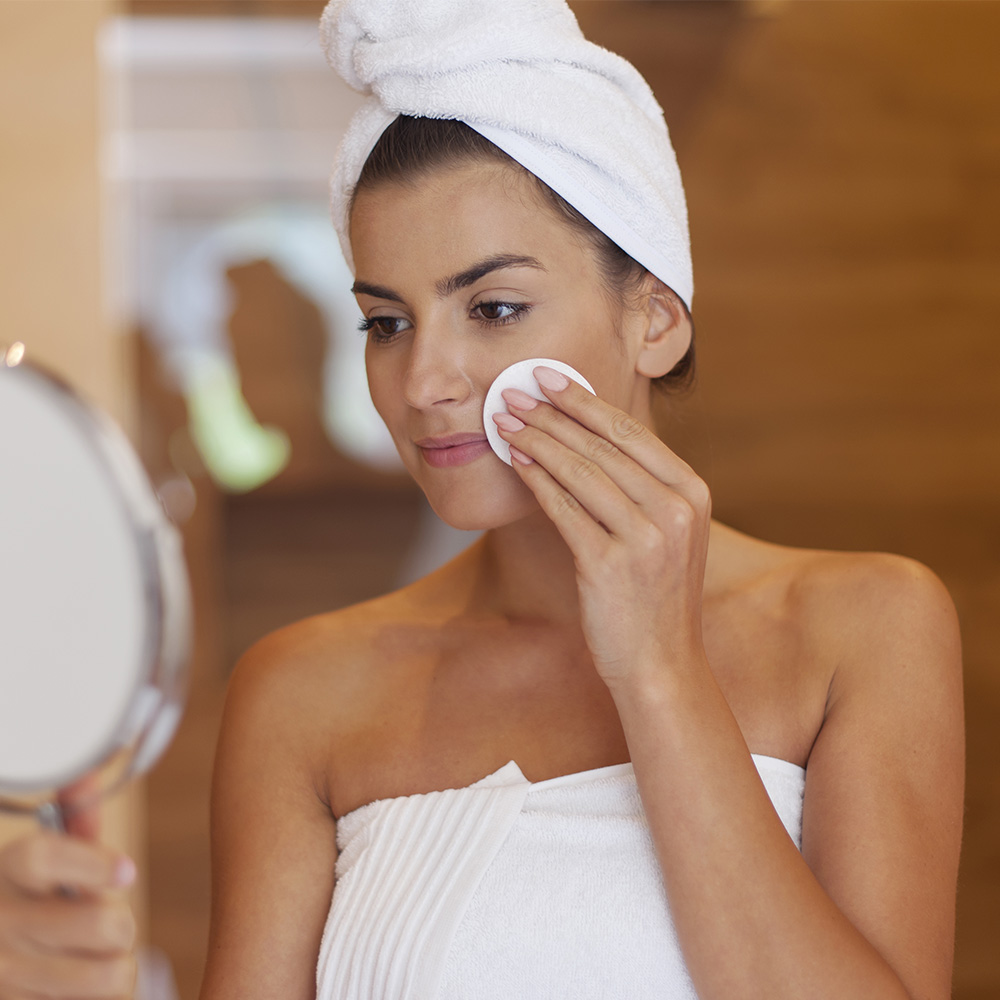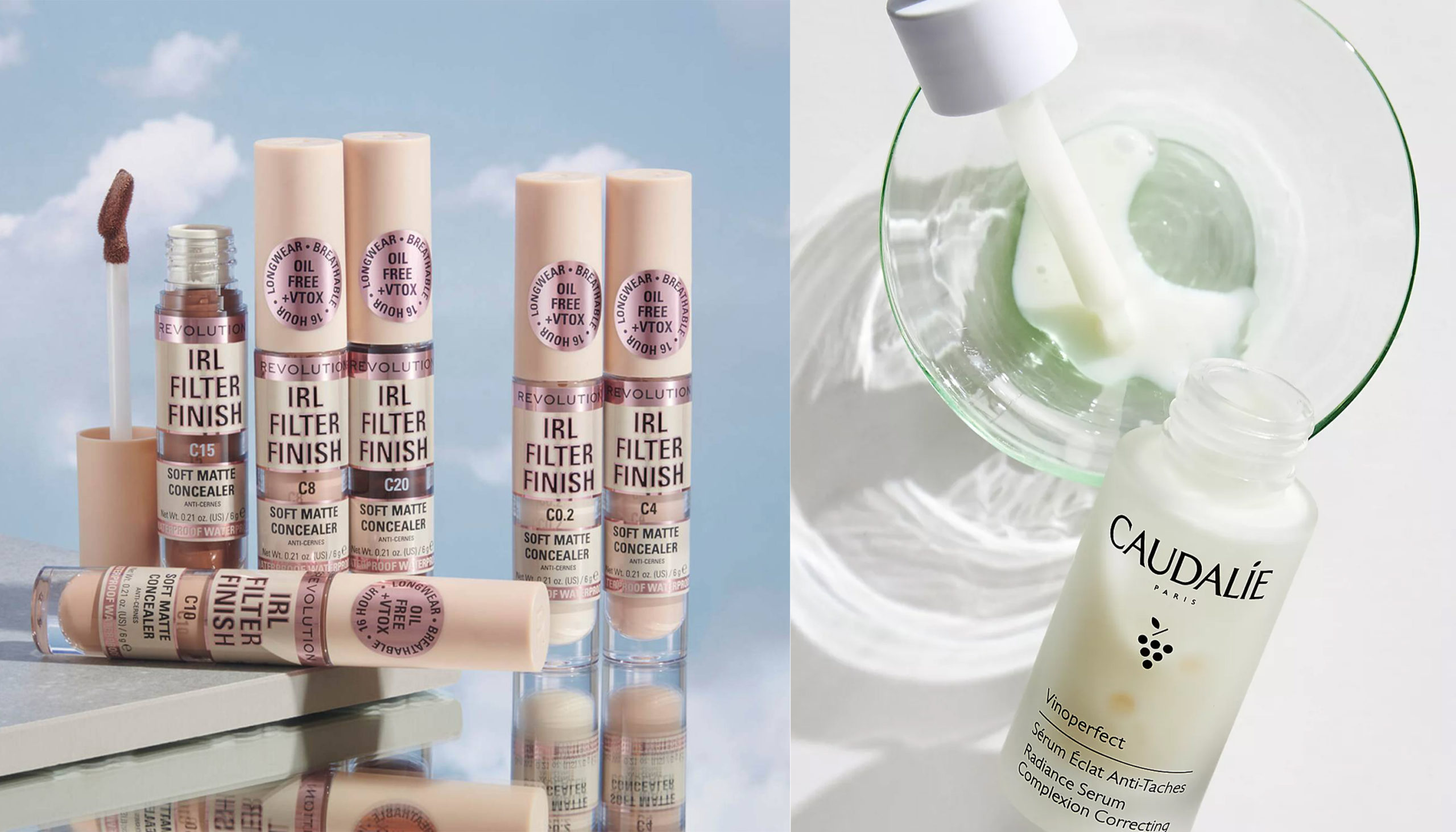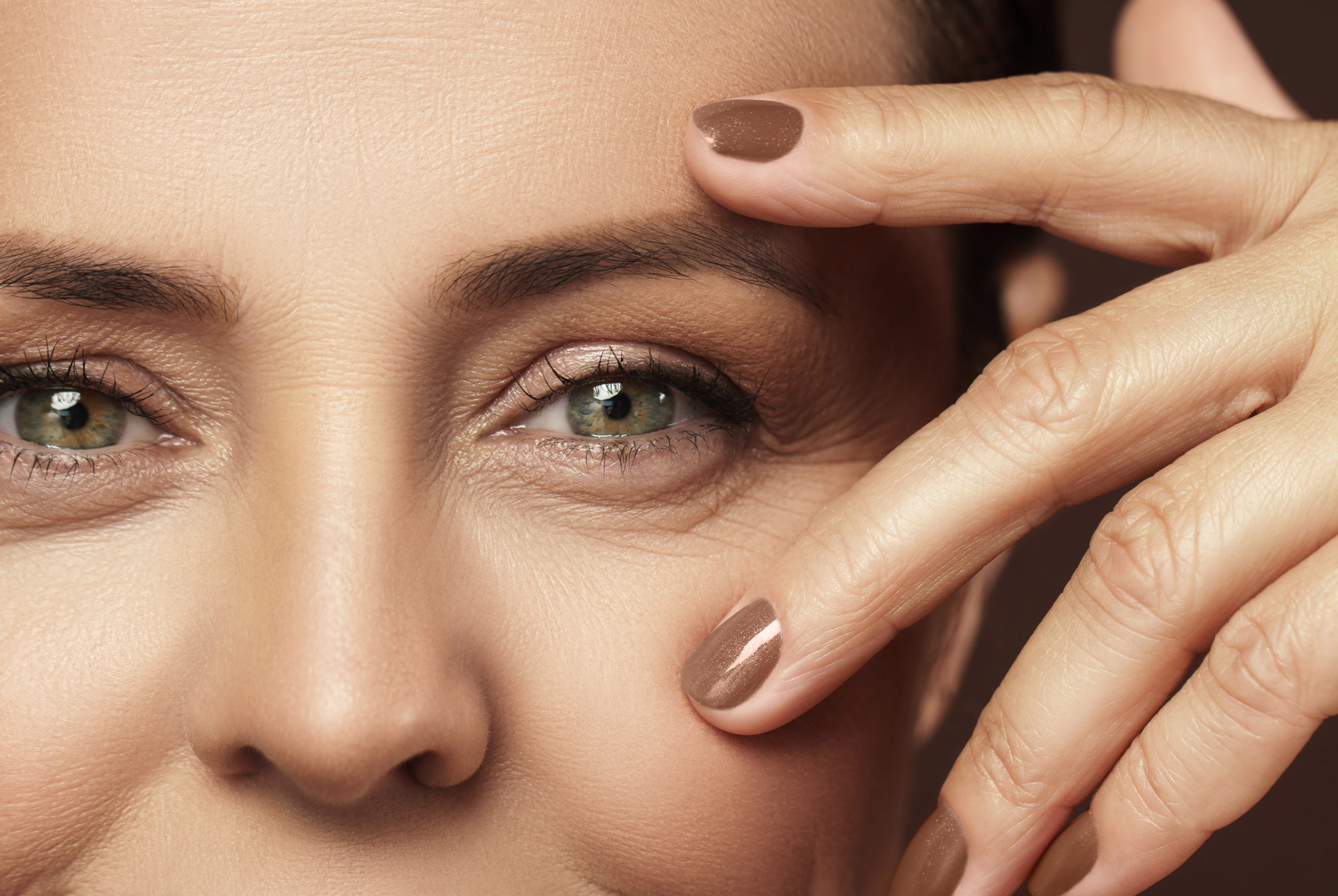
A surgeon with a (rare) reputation for doing all that he can to keep patients out of the operating room, Troy, MI, plastic surgeon Anthony Youn, MD, shares countless tips and tricks he’s encountered in the past 16 years to help us feel our absolute best in his book The Age Fix. Here, an excerpt from the feel-better-now book that debunks some of the most talked about myths in the beauty world.
You May Also Like: 5 Anti-Aging Myths an Aesthetician Wishes You’d Stop Believing
“Fact”: All celebrities get plastic surgery.
Not all, but a lot of them do, as there’s a huge amount of pressure in Hollywood to stay looking as young as possible for as long as possible. To many celebrities, plastic surgery is a sort of business expense. However, plastic surgery doesn’t always go well for celebrities. Just like anyone else, celebrities sometimes pay too much for bad results. Those like Sharon Osbourne, Julie Chen and Kris Jenner come to mind. However, you should know that for every celebrity plastic surgery you know about, there are dozens—no, more like hundreds—of celebrities who’ve had plastic surgery that is so good, almost no one can tell it’s been done. No one but a person with a trained eye, that is—like a plastic surgeon.

“Fact”: Only excessively vain people get plastic surgery, and I’m shallow to care about looking younger than I really am.
Dr. Youn tells his patients that each one of us sits somewhere along a scale indicating how much we are willing to do to look younger than we do right now. For some people, all they are willing to do to improve their appearance is to eat better and use creams on their skin. Others may be willing to undergo treatments at home like at-home microdermabrasion and handheld laser treatments, some are willing to have in-office lasers and other noninvasive procedures, and others may consider injections of Botox and fillers. Only a small percentage of people are willing to go under the knife to enhance their appearance.

“Fact”: Facial muscle workouts work to keep my face from sagging.
While you certainly can strengthen your facial muscles, these facial exercises this will not combat sagging because unfortunately, your face and your abdomen don’t sag for the same reasons. The abdomen can sag when you lose muscle tone, but faces sag due to a loss of collagen and elastin in the skin. It’s the same concept that’s behind smile lines, crow’s-feet and forehead wrinkles. The more often you make a certain facial movement that creases your skin, the more likely that crease is going to settle in and make a permanent home on your face.

“Fact”: If collagen is the problem, I should use collagen cream.
Collagen creams make a lot of exciting claims that sound too good to be true, and they are. Skin is made from collagen, and that collagen degrades and breaks down over time. It may seem logical that if your skin is losing collagen, rubbing collagen on your face would help the problem, but unfortunately, the collagen molecule is too large to penetrate the skin. You are simply placing collagen on the surface, and this cannot change the skin’s structure. The only thing collagen creams really do is moisturize your skin, which can make it look younger for a couple of hours, but you can do that for a lot less money than you will spend on a high-end collagen cream.

“Fact”: Pillow wrinkles can become permanent.
A crease on any given day won’t have an effect, but if you always sleep on your face or on your side, creasing your face in the same way night after night, the deep creases that are temporary in the beginning can become permanent over the years. These are called sleep wrinkles, and they are different from wrinkles formed by muscles (called expression lines). The best way to avoid sleep wrinkles is to sleep on your back. If you must sleep on your side, a satin or silk pillowcase will not crease your skin as much as a cotton or polyester pillowcase.

“Fact”: Preparation H gets rid of under-eye bags.
This is an urban legend that has been out there for a long time and unfortunately, the active ingredient that supposedly worked to eliminate under-eye bags was removed from the product years ago—at least in the United States. Some people believe that the Canadian version of Preparation H still contains a live yeast extract called Bio-Dyne, and that this ingredient is responsible for the under-eye miracle. The ingredient in the U.S. formulation that replaced Bio-Dyne, phenylephrine, is a vasoconstrictor and may help mildly improve lower eyelid puffiness, but most people believe it doesn’t work as well as Canadian Preparation H with Bio-Dyne.

“Fact”: I can change the size of my pores.
Pore size is determined by factors beyond your control: genetics, skin type and age. However, you can reduce the appearance of pore size pretty easily, so you don’t have to obsess about those “gaping holes” in your nose that you keep examining in the magnifying mirror. The best ways to make pores less noticeable are to keep your face clean by using a good cleanser (dirty pores look bigger) containing salicylic acid, follow cleansing with an exfoliating product a few times a week (these should contain an alphahydroxy acid), and have periodic chemical peels to keep pores looking smaller.

“Fact”: My car window protects me from UV radiation.
This one is partially true. Car windows block UVB rays, which cause the skin to tan and burn, but not UVA rays, which can cause sun damage, wrinkles and even skin cancer. If you drive a lot, check out your left hand and arm and the left side of your face. I bet you will notice more dark spots and sun damage on the left side than on the right side. This is very common. And it doesn’t matter whether you drive a Lexus, a RAV4 or even an old Gremlin.

“Fact”: Clothing like hats and T-shirts will protect me from the sun.
While gear like hats and T-shirts seem like total protection from the sun, clothing isn’t as effective at blocking UV ways as we thought. T-shirts provide the protection of a sunscreen with an SPF of just 5 to 10, and this protection is decreased if the shirt is wet. This is not nearly enough to protect our skin for longer than a few minutes. For this reason, you should put sunscreen on your face and body even if you are covered up.

“Fact”: Because vitamin D is good for you, I should be tanning to raise up my exposure.
While it’s true that vitamin D is essential for the health and growth of bones and for other important processes in the body, it’s also true that the skin produces vitamin D when exposed to sunlight. We all need vitamin D, and it is difficult to get enough from food. However, too much sun exposure really does damage your skin and causes premature aging, wrinkles and skin cancer. The good news is that you can get your skin to produce vitamin D with very minimal sun exposure. The sunlight you get through your car window or walking around outside during the day is typically all you need, about 10 to 15 minutes each day.

“Fact”: What’s listed on the ingredient label of my beauty product is exactly what I’m going to get.
Although a company can’t technically lie on their packaging, they can include an ingredient in such a small amount that it doesn’t actually have any effect, but still advertise that the product contains that ingredient (because it does). Just as with food products, ingredients in skin care and other personal care products are listed in order of how much of that ingredient the product contains, meaning that the first ingredient is the most prevalent and that the last ingredient may be there only in minuscule amounts.

“Fact”: Hand sanitizers dry out and age my hands more than soap.
Hand sanitizers usually contain alcohol, and alcohol does have a drying effect on the skin. However, alcohol is actually less drying on your skin than soap and water, which strip your hands of essential natural moisturizing oils even more than hand sanitizers do. However, keep in mind that while hand sanitizer kills germs, it does not remove actual dirt from your hands. If you have been changing a diaper or handling food or gardening, wash your hands with soap and water afterward, as hand sanitizer is not enough.

“Fact”: My hair grows back thicker after I shave it.
There’s nothing about shaving a hair in the middle of its shaft that signals the body to change the quality, thickness or anything else about the hair, not even the length. Some people think that shaving triggers the hair to start growing again, but this isn’t how hair growth works. Hair grows to a certain length, hangs out for a while, then drops off the body. But why does the hair literally look thicker after you shave? Because the base of the hair shaft is thicker than the tip of the hair shaft. When you lop off the skinny part of the hair, the thicker part grows out and feels stubbly and less pliable than it did when you could feel only the soft, thin end of the natural hair. It’s still the same hair of the same diameter, however, so shave away.

“Fact”: Spider and varicose veins are caused by always crossing your legs when sitting.
There are many causes for spider and varicose veins, but crossing your legs isn’t one of them. The real causes of varicose veins are genetics, standing for long periods of time day after day (especially if you have a genetic propensity to develop them), and pregnancy. If you like how your legs look when you cross them, then knock yourself out. It’s not going to make the vein situation any worse (and there are ways to fix these veins!).

“Fact”: “Lunchtime facelifts”are great alternatives to more drastic surgery.
Lunchtime facelifts (non- or minimally invasive procedures that take about an hour and have little to no downtime) are basically a commoditization of plastic surgery procedures by aggressive businesspeople and profit-motivated doctors. It’s crucial to remember that any cosmetic surgery is only as good as the doctor or surgeon who performs it, and doctors who do lunchtime facelifts are not usually doctors you should want performing on you. There’s a reason why reputable, board-certified plastic surgeons don’t perform lunchtime facelifts, and it’s because they do not work. If it sounds too good to be true, it probably is.

“Fact”: Scars are signs of bad plastic surgery. If the plastic surgeon is really a good plastic surgeon, my scars should eventually disappear.
There is no such thing as an invisible or completely disappearing scar. Even after a short surgery that requires an incision, a scar is created, then the body then begins to heal the scar around the clock, leaving the scar mature and then you’ll know how it’s going to look, generally, for the rest of your life. The plastic surgeon has very little control over this process. Scars are permanent, and the way they heal has a lot to do with aftercare and your individual body and skin. You can try to alter your body’s healing response by using a good silicone-based scar cream or undergoing laser treatments or steroid injections to minimize scarring, but even if you do all of these things, your body might still create a thicker, more unsightly scar than on the person next to you, or it may also create a scar that becomes barely noticeable over time.

“Fact”: Liposuctioned fat comes back in a different place, and/or in a weird, lumpy shape.
Dr. Youn and his colleagues believe and inform their patients that liposuctioned fat will not return to another area. If a surgeon sucks fat out of your thighs, it’s not going to reappear on your upper arms. However, in 2011, a study was performed at the University of Colorado that suggested this could actually happen. The study was performed on 32 volunteers and found that after liposuction of the thighs, strange excess pockets of fat appeared on the trunk and even the arms, as if the liposuctioned fat had somehow returned to a different location. However, another, larger study on 301 patients a year later refuted the findings, suggesting that perhaps there was a problem with the original, much smaller study.

“Fact”: If I get breast implants, my breasts won’t droop as I get older.
Breast implants act as weights in your breasts, meaning that gravity pulls on them day in and day out. The bigger they are, the heavier they are and the more quickly they will sag. However, there are some actions you (and your surgeon) can take if you have breast implants to prevent them from sagging as quickly as they might otherwise: Wear a supportive bra with underwire during the day, wear a sports bra when you work out, and probably most important of all: if you do decide that you have to have breast implants, don’t go any larger than necessary to make you feel balanced.


















